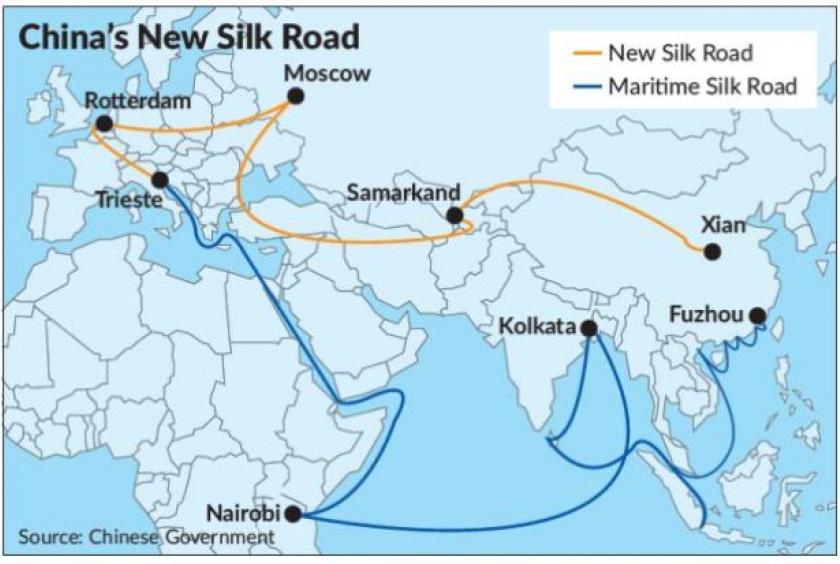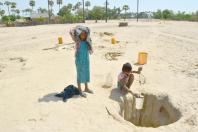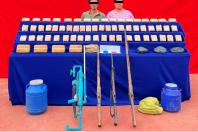The Star | #AsiaNewsNetwork (The Star/ANN) — AMID unsavoury news that many major projects linked to the Belt and Road Initiative (BRI) have been fraught with political and debt issues, few would have expected European countries to embrace this ambitious trade and infrastructure plan of China.
Despite the negative reports on BRI projects in Sri Lanka, Pakistan, Malaysia, Myanmar and Ethiopia, as well as warnings from the United States that China is using this grand plan to debt-trap poor nations to expand its reach and influence, the BRI is making unimpeded headway.
Last month, Italy became the first G7 nation to sign up for BRI cooperation during Chinese President Xi Jinping’s six-day visit to Europe covering Rome, Morocco and Paris.
Resisting intense pressure from Washington and Brussels, Italy defiantly signed the Memorandum of Understanding (MoU) on BRI with China on March 23.
To be sure, Italy is not the first EU member state to embrace the BRI. Croatia, the Czech republic, Hungary, Greece, Malta, Poland and Portugal have all signed up. But Italy caught the world’s attention because it is the first founding EU member, and the first G7 nation, to join the BRI family.
Washington, persistently fearing the rise in China, had opposed Italy’s endorsement of the BRI. Its National Security Council pointedly said Italy “should not lend legitimacy to China’s vanity infrastructure project”.
But for recession-hit Italy, the BRI provides opportunity for it to revitalise its economy. It has to be “Italy first”. It has to upgrade its ports and increase exports to China, which stood at only 3% of its total exports.
In total, Chinese investors signed 29 separate deals and projects totalling US$2.8bil (RM12bil). Most notably, the Chinese agreed to invest in port infrastructure in Trieste, Genoa and Palermo, which could give Chinese goods faster access to Europe.
“For China, this is clearly a major symbolic victory because of the powerful endorsement from a G7 country, which was a founding member of the European integration project,” writes Xiang Lanxin in the Valdai Discussion Club, a grouping of international scholars.
image: https://www.thestar.com.my/news/nation/2019/04/07/belt-and-road-advances...
The trip also saw the endorsement of BRI by Luxembourg, a tiny nation that is Eurozone’s leading financial centre and the world’s second-largest fund market. Luxembourg is also a founding member of the EU.
What was unexpected during Xi’s visit is that France and Germany also indicated their interest in BRI, according to Xiang.
When the BRI was officially announced by Xi in 2013, the EU as a whole reacted positively, mainly due to the new business and investment opportunities.
But when Washington launched a scathing attack on the BRI, the EU echoed the US stance. Since then, China has been vilified as a country using “debt diplomacy” to “colonise” countries hungry for infrastructure.
Of late, Europe has become more vocal in its criticism of China, calling it “a partner as well as an economic competitor” and a “systemic rival” on governance.
The West has expressed concerns over China’s growing influence, predatory investments and possible hacking of 5G data networks. These allegations fail to dissipate even after repeated denial and clarifications from Beijing.
Hence, Italy’s move to endorse the BRI is significant and is seen by many as a major diplomatic win for Beijing.
BRI expands by near 100%
China’s Global Times, the mouthpiece of the Communist Party of China, has commented that Italy’s move shows that the BRI must have been beneficial to participating nations.
Before Italy, a total of 123 countries and 29 international organisations have signed the cooperation documents to jointly build the BRI that promises economic development and prosperity in recipient countries.
When the initiative was first launched in 2013 promising total investments of US$1 trillion (RM4.1 trillion), only 64 countries signed the BRI cooperation documents.
This means that over the past five years or so, total BRI “nation members” have risen by nearly one fold.
The BRI aims to create an economic land belt that includes countries on the original Silk Road through Central Asia, West Asia, the Middle East and Europe, as well as a maritime road that links China’s ports with those in South-East Asia, the African coast, through the Suez Canal into the Mediterranean.
When the project was conceived, Beijing also wanted to redirect China’s domestic overcapacity and capital for infrastructure development in Asean countries, Central Asian and European countries.
The BRI, or New Silk Road as it is called now, was mooted at a time when China was excluded from strategic trade agreements.
Significantly, the US-led Transatlantic Trade and Investment Partnership and the EU-Japan agreement that carry comprehensive liberalisation agendas do not include China.
While China may have various agendas for its BRI project and there are uninviting criticisms, it is beyond doubt that this cross-border economic plan has brought tangible benefits to the Middle Kingdom and BRI economies.
According to a World Bank Report in December 2018, BRI economies are benefitting from investments from China.
“Belt and Road economies located along the corridors where BRI projects are built experience the largest gains. Shipment times along these corridors decline by up to 11.9% and trade costs by up to 10.2%,” said the World Bank.
Apart from getting investment and financing from China for railway, ports and other infrastructure projects, BRI nations are also enjoying greater trade with China and more direct investments from the mainland.
According to a BRI Report Card by Moody’s Investors Service released in January, China’s total trade with BRI countries grew by 8.3% in the first three quarters of 2018, higher than China’s average global growth rate of 7.5%.
During the period, BRI countries accounted for 37.5% of China’s exports and 41% of imports.
The BRI Report Card opines: “Increasingly, China appears to look to BRI countries as an important source of export demand and a source of vital raw materials.
“Over time, we expect BRI countries to grow in importance in global supply chains as processing and transportation centres. Improved manufacturing capabilities could foster their export of final value-added goods.”
The rising costs in China could drive a gradual shift of production from China to some BRI countries in South-East Asia, Moody’s adds.
But Moody’s also cautions that large reliance on Chinese funding could worsen some BRI host countries’ debt affordability, leading to weaker sovereign creditworthiness.
“If invested wisely, BRI funds have the potential to promote productivity and economic growth of BRI countries through infrastructure improvement.”
For many BRI countries, China – which does not have a history of invading or colonising countries – is seen as a business partner because its investments do not come with any political conditions attached.
This “project of the century” is providing a platform for businessmen looking out for opportunities in transportation infrastructure, railway construction, energy and resources exploitation, shipping and logistics.
Second BRI Summit
Standing aloof, the world’s second largest economy will be hosting the second international forum/summit on BRI, after holding the first successfully in May 2017.
According to a new website catering for the second BRI summit, leaders of “about 40 foreign governments” and representatives from more than 100 countries will attend the Belt and Road forum in Beijing later this month.
At the first summit/forum, only 29 heads of government attended the event.
The sharp increase in the number of attendees this year can be seen as another major “diplomatic victory” scored by China.
Prime Minister Tun Dr Mahathir Mohamad, who will be attending the summit, is scheduled to deliver a speech in Beijing.
Singapore’s Prime Minister Lee Hsien Loong, who was not invited to the last summit, is expected to show up this time after ties between the two nations improved.
Italian Prime Minister Giuseppe Conte has stated he will be attending the BRI summit.
While the coming summit, to be opened by Xi, could be another dazzling diplomatic event of the year, China cannot rest on its own laurels.
The current controversies surrounding some BRI projects need to be addressed before Beijing could elevate the BRI to another level. China needs to counter growing concerns that Xi’s signature programme may burden backward BRI countries with debts.
Indeed, some governments are reassessing Chinese investments – not just BRI projects, particularly after the Chinese took possession of the ownership of a port in Sri Lanka after the latter failed to repay its loan.
Malaysia is renegotiating with China on the RM55bil East Coast Rail Link project suspended last year. Myanmar has scaled back a port deal struck under its previous regime, while heavily-indebted Maldives booted out a pro-China government last year.
South-East Asia is wary of China’s ambition and the BRI’s potential to land countries into unsustainable financial debts, according to a recent survey by the ISEAS-Yusof Ishak Institute.
There are complaints that most Chinese lending in BRI is on less concessional terms than offered by multinational institutions.
Indeed, China appears to have recalibrated its BRI investment strategy and lending after its think tanks had toured BRI nations and assessed situation on the ground.
“There are indications that China is becoming more selective in BRI projects as the value of new contracts in the BRI has significantly declined since 2016,” Moody’s noted in its BRI Report Card.
After four years of increases, Chinese-led new contracts and direct investments in BRI countries declined to US$116.4bil in 2017 from US$143.2bil in 2016. The total value in first-half 2018 was only 42% of that in 2017.
This change could be due to tighter funding conditions in China and domestic political reactions in several BRI countries, said the BRI Report Card.
For China, a comprehensive review of their investment decisions vis-a-vis risks is needed. It cannot ignore economic, political and security risks faced outside China, particularly in South Asia and Central Asia.
China may need to look at the real needs of the recipient countries in recommending win-win programmes so that BRI projects will not end up as white elephants.
Read more at https://www.thestar.com.my/news/nation/2019/04/07/belt-and-road-advances...
https://www.thestar.com.my/news/nation/2019/04/07/belt-and-road-advances...










